
AgingInPlace.org keeps our resources free by working as an affiliate partner with some companies mentioned on our site. These partnerships or the commission we may earn do not affect our opinions or evaluations of the products we mention. Our reviews are solely based on our research methodology and from input from our AgingInPlace.org Advisory Board. Learn more about our ad policies.
Kitchen Of The Future: Remodeling For Comfor.
If trends from the 2010 US Census continue, the number of Americans over 65 will almost double from the 2006 tally of 37 million and reach 71.5 million people. According to the AARP, 87% of these seniors want to “age in place,” or stay within their homes, instead of moving into a retirement community, nursing home, or assisted living facility. Over 70% of people between the ages of 50 and 64 would prefer this lifestyle as well. As technology advances, we are able to remodel our homes to make this lifestyle easier to obtain and give us the kitchens of the future as we age.

“Aging in place” is actually an official term, defined by the CDC as “the ability to live in one’s own home and community safely, independently, and comfortably, regardless of age, income, or ability level.” This means more than the comforts of home – it means retaining a sense of independence and ownership well into retirement, with private facilities for bathing and recreational activities. It also saves the expense of a long-term care facility.
87% of seniors want to age in place
If you or a loved one plan to stay put at home for the long haul, it is time to consider safety and convenience issues in the future. And the first place to start is one of every home’s main activity centers – the kitchen.

Overall, the kitchen is one of the more dangerous rooms in the home. It’s also a room in which we spend a large amount of time. The following statistics are just a few of the reasons to prioritize a reorganization the kitchen specifically for an older person:
Lacerations from kitchen tools account for 42% of hand injuries that are seen by ER professionals.
Falling is such a prevalent cause of injury that most “aging in place” modifications are with that hazard in mind. For seniors, avoiding falls means avoiding a plethora of additional health problems.
The kitchen should always be located on the ground floor of the property. If it is on another level, you may want to consider a change because of the amount of time spent there and the activity of daily living (ADL) that occurs there.
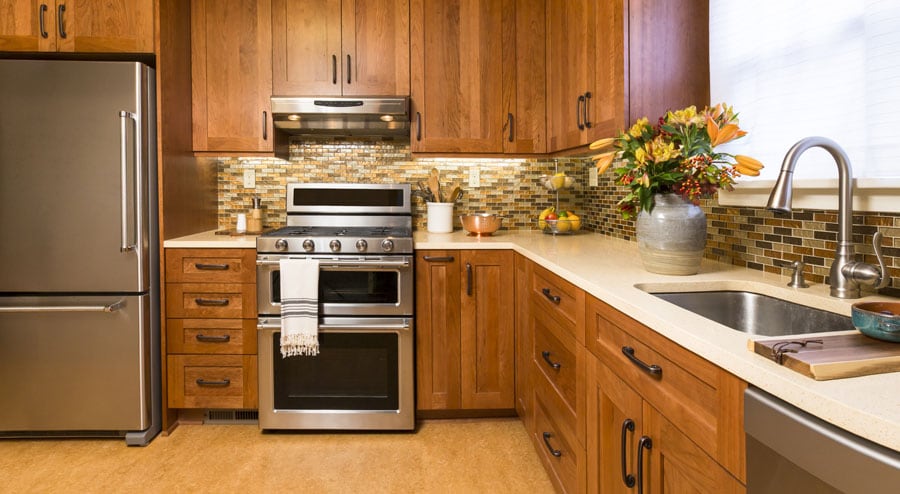
An aging in place residence should have additional clearance around all doorways and thoroughfares. In most homes, these passageways are only 24 inches, which do not allow access for a walker. Proper access for wheelchairs requires 42 to 48 inches of clearance for all pathways. Doorways should be at least 36 inches wide for the same reasons.
If you want to keep your existing doors, you can invest in a special hinge that will move the edge of the door out of the passageway. This will give you an extra few inches on any doorway that leads into the kitchen.
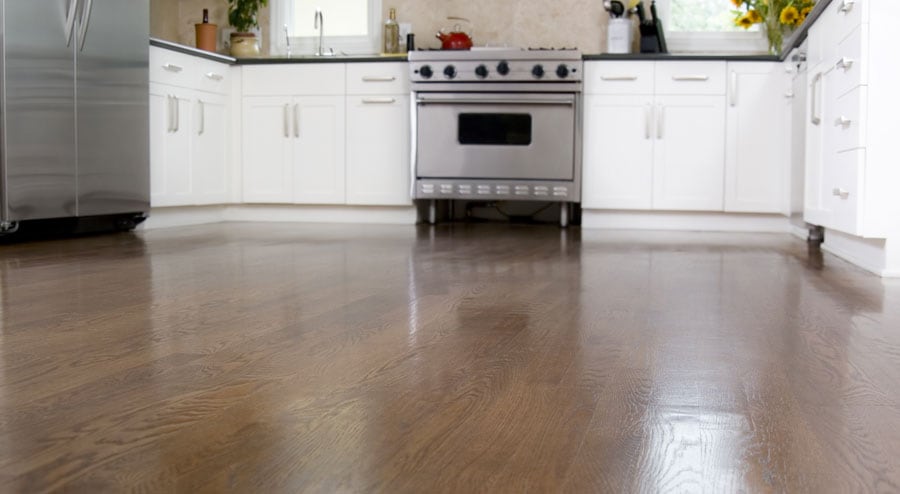
No matter what your budget, make the flooring in your kitchen and elsewhere in the house a top priority. Spills that are not easily cleaned can lead to slips and falls. Any floor covering that you choose should be non-glare. Avoid carpet tape at all costs. And don’t even think of incorporating rugs as a part of your kitchen floor aesthetic – there is a reason they are called “throw” rugs!
Don’t even think of incorporating rugs as a part of your kitchen floor aesthetic – there is a reason they are called “throw” rugs!
Non-slip tile and low pile carpet are easy to maintain and clean. Cork floor coverings may also help to prevent slipping accidents while maintaining a level of comfort for the feet. However, you need not completely replace your existing stone or tile if you apply a slip prevention texture to it.
Keep in mind that tile can be difficult to stand on for extended periods of time, especially for people who have hip or lower back pain. Tiles or stones should be kept very small. The less distance that you have between tiles, the lower chance of a slip and fall accident.
That said, choices like vinyl, wood or linoleum flooring are usually the best options for an aging in place resident. This is especially true if the resident is confined to a wheelchair. Hardwood is much easier to roll a wheelchair over than tile or carpeting.
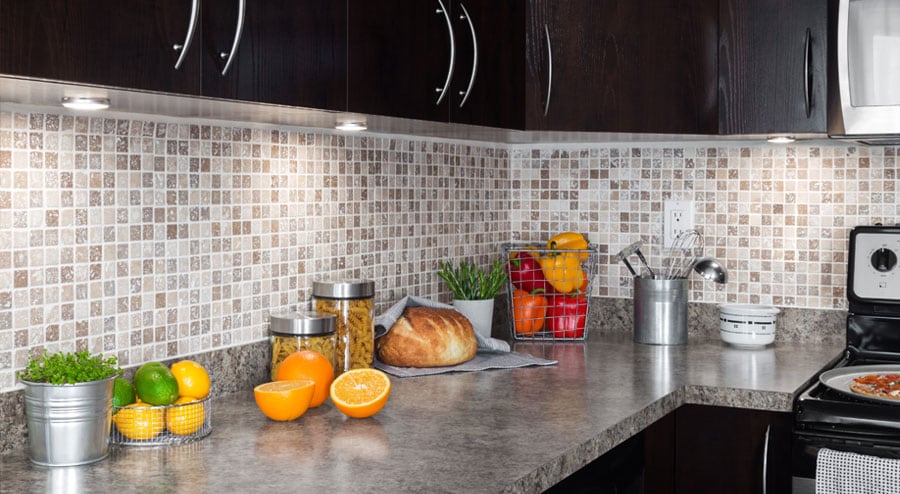
The right lighting in your home to help prevent accidents, create a more suitable work environment, and reduce eye strain. Plan a good mix of sunlight and artificial light.
Shiny colors and surfaces with glossy finishes reflect light and create glare, which can be dangerous.
Make sure that light reaches wherever it needs to be, especially in the high-use areas of the kitchen. Under-cabinet lighting will help to illuminate work areas that would otherwise be dark. You can also add task or track lighting to make sure that anyone at home has the appropriate light no matter when or where they choose to work.
Make sure that light switches are easy to use and accessibly placed. There should be a light switch near the entrance of the kitchen in arm’s reach before the resident has a chance to get to any sharp items or small appliances. One of the most popular home automation features is an automatic light switch that turns on as soon as a person enters the kitchen. If this is not an option, rocker type light switches are usually the most convenient for an aging in place residence. Bolster the safety of your kitchen by using windows to increase the amount of natural light in the room. Protect everyone’s privacy with easily accessible blinds, making sure that the throw string is long enough to easily reach without becoming a slip-and-fall hazard.
You may have to hire professionals to balance the surface and lighting types in your kitchen area. The colors that you choose for your surfaces will influence how well your lighting works in there. Although you want your cabinets and countertops to show their edges with bright colors, make sure those colors are not shiny. Shiny colors and surfaces with glossy finishes reflect light and create glare, which can be dangerous.
Recessed lights are a great way to add illumination to a kitchen with only a single light source. If your lighting budget is limited, increase the wattage in your light fixtures. Switch to modern LED lights as well – they get the same power for a fraction of the energy use of traditional incandescent lights.
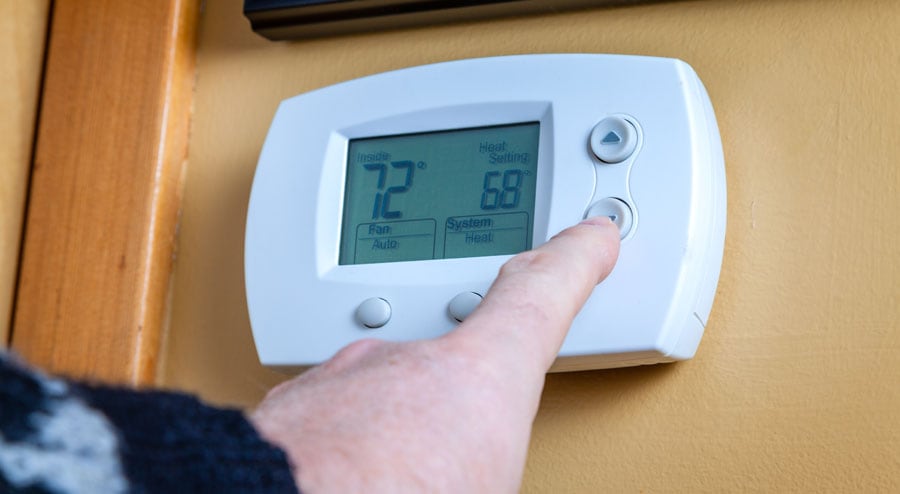
Regardless of the temperature in the rest of the house, work in the kitchen can quickly raise the heat. Make sure there is an easily accessible thermostat in the kitchen so that the temperature can be easily adjusted if heavy cooking makes the kitchen hot. This will help to eliminate the possibility of lightheadedness or fainting that may occur from overheating or heat exhaustion.
If your home does not have central air or a thermostat, place a convenient window unit with easily accessible, large controls that your resident can adjust at will.
If your home does not have central air or a thermostat, place a convenient window unit with easily accessible, large controls that your resident can adjust at will.
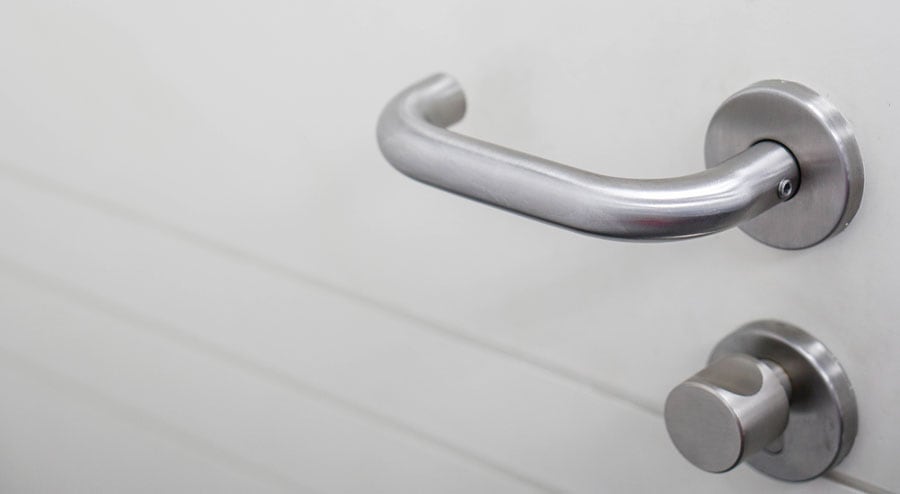
Traditional handles are usually not very convenient for aging homeowners. A D-shaped handle, known as a D handle or a loop handle, gives a better grip and should be used on all doors in the kitchen, including cabinet doors, appliance doors and doors leading into the room itself.
Get rid of any door curbs that separate the kitchen from the rest of the house. Ideally, the entrance to the kitchen should be flat with no “speed bumps” between rooms. If your budget won’t allow removing door curbs within the infrastructure of the home, you can install a slope that will ease the transition from room to room and eliminate the possibility of slips and falls.
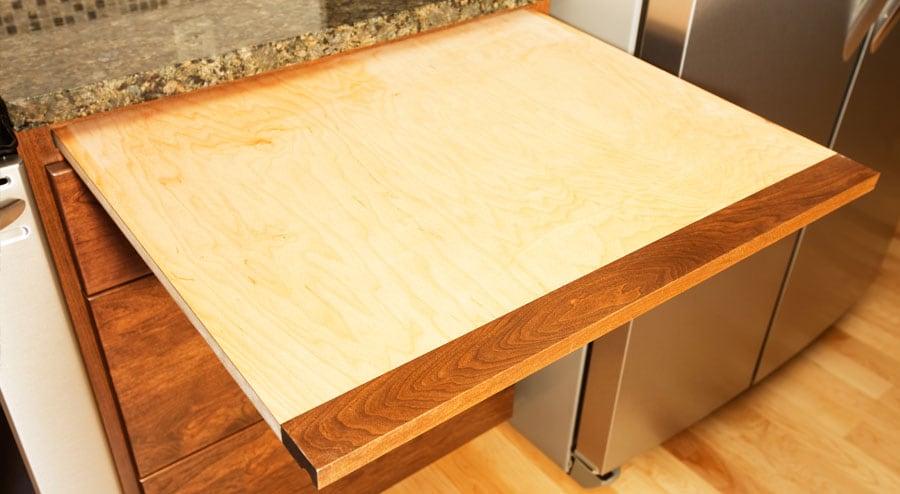
Cabinets should not be difficult to reach. In general, upper cabinets should be placed around 3 inches lower than their usual height in an “aging in place” residence. If the upper cabinets are especially tall, you may want to consider adding a pullout step around the perimeter of the floor. A pull-down shelf in your upper cabinets keeps people from having to overreach in order to access what they need.
Pull cabinets are the way to go in an “aging in place” residence, offering more maneuverability, and easier access to items in the back of the shelf.
Lower cabinets can be made more convenient through the addition of pullout shelves. These shelves will reduce back strain, and they will also help to maximize the storage space in the lower cabinets. You can find pullout shelves at any major home improvement store, or you can have them built in through a dedicated shelving company.
As a rule, home features that are more relevant to ADL should be placed in lower cabinets. Keep heavier and bulkier items such as large bowls in lower cabinets as well.
In general, pull cabinets are the way to go in an “aging in place” residence. They offer more maneuverability, make it easy to access items in the back of the shelf, and provide additional safety measures for people who may have trouble reaching.
Placing your most frequently used items on open shelves makes it easier not only to reach them, but to find them. Install
Lazy Susan cabinets wherever they will fit for even more access. Finally, use lever style handles instead of knobs for easier access.
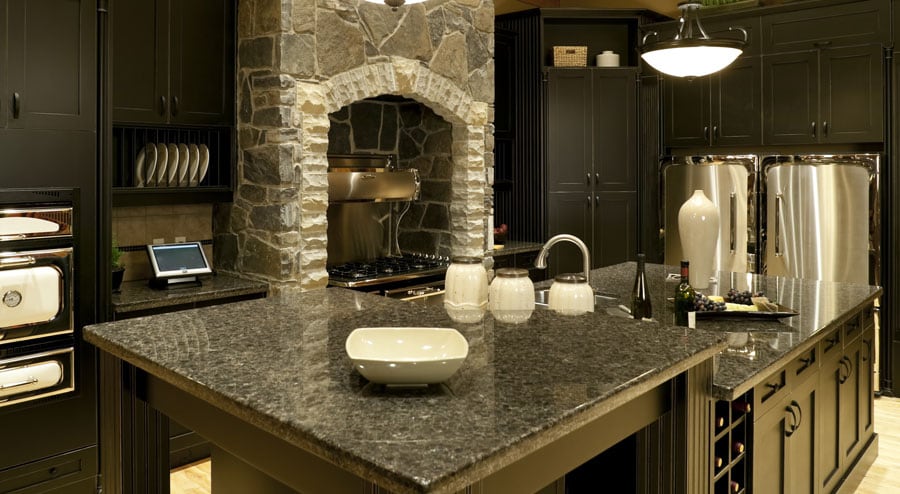
As you change out your counters for an aging in place residence, keep an eye to accessibility and function as you choose your new configuration. Multilevel countertops are one great way to increase maneuverability and choice – anyone at home can reach the countertop that is most convenient at any given time. The standard height of a countertop is 36 inches; another level at 30 inches will make room for people who would rather sit than stand.
Color-coded edges on countertops give a visual signal that will help to stave off accidents. Since sharp corners tend to cause more injuries, installing countertops with rounded corners and edges will circumvents this hazard.
Get a professional opinion to configure your countertops so that there will be less clutter from small appliances and dishes.
Choose a surface with ease of use and maintenance in mind. You may want to overlook that great-looking granite for a more practical material. Also get a professional opinion to configure your countertops so that there will be less clutter from small appliances and dishes. The more space that you can leave to move around, the smaller the chance of accidents.
Along the edge of the countertops, there should always be an emergency grab handle within reach. Many home installers can place a long single handle along the entirety of the countertop. You may also purchase shorter handles that can be attached to a countertop through adhesives at various intervals. These handles are meant to help break a fall so that someone falling does not reach for an unattached appliance or utensil that would only increase the possibility of an injury.
Place your oven, sink and refrigerator as close as possible to each other. They form the three hubs of your “work triangle” – the most important and most frequently used appliances in your kitchen. Keep them on the same level if possible for easy transfer. Prioritizing the work triangle keeps your resident from wasting time during prep, cook time and the cleanup.
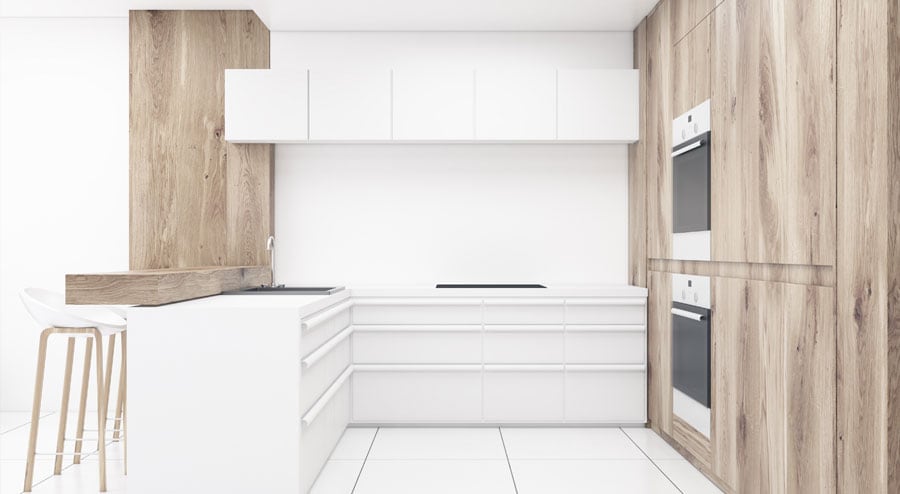
The wall oven is one of the most versatile, convenient and safe versions of an oven to have in an aging in place residence. It can be placed in multiple locations and accessible heights. They can also be aligned with the adjacent countertop, reducing the need to bend or lift. Have your wall oven mounted so that anyone can easily reach it. Make sure that it has a bright, large console with plenty of interior light make it easy to read.
You may be to reduce accidents by installing a pullout counter directly underneath the oven. This option makes it easy to set dishes down as soon as they are pulled from the oven.
Having a cooktop instead of a standard range is a safer choice for an aging in place residence. Cooktops cool off much faster than traditional ranges, and they also allow for an easier transition from the cooking space to the countertop. Cooktops can also be installed at variable heights to ensure the comfort of your resident whether sitting or standing.
Cooktops cool off much faster than traditional ranges, and they also allow for an easier transition from the cooking space to the countertop.
Make sure that your cooktops have color indicators that showcase whether the burners are on or still hot after the cooktop has been shut down. Cooktops with front mounted controls are the safest – they keep people from having to lean over burners that could be hot. Choose one that has a large numerical display so that your resident will easily be able to see temperatures and time frames.
The latest selection of cooktops are also self-cleaning, which is definitely a plus. Your resident will not have to bend down into the crevices of a dangerous machine to ensure its cleanliness. Have a cooktop that allows water to be installed easily at the cooktop to fill pots more conveniently. One of the best ways to make a cooktop accessible – particularly for wheelchairs – is to install cabinet doors directly underneath.
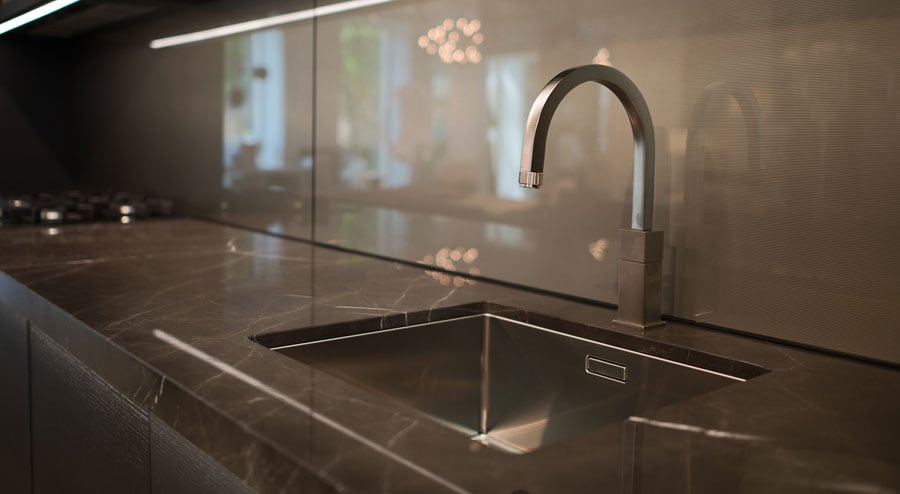
Consider both the height and the depth of the sink during your kitchen remodel.
Make sure that the sink is around 6 inches deep. This may seem a bit shallow, but you do not want an aging resident bending over too far to reach the drain.
A motorized sink or adjustable height countertop offers freedom of adjustment, particularly for wheelchairs. If you are considering a motorized sink, make sure that you leave space below the sink to allow wheelchair access.
One of the most important features on a sink should be an anti-scald device. As stated before, there are many emergency room injuries that are caused by scalding water every year. This number is probably low, because many of these injuries go unreported.
If a hands-free faucet is not possible, a lever handled faucet mounted on the side of the countertop rather than from the back is another way to make a sink more convenient. Having a pullout sprayer is also advantageous, and since most modern sink layouts come with this anyway, it is an easy feature to add.
One of the most important features on a sink should be an anti-scald device. As stated before, there are many emergency room injuries that are caused by scalding water every year. This number is probably low, because many of these injuries go unreported.
Having a soap dispensary makes it easy to access soap or cleaning materials to wipe down countertops and scrub heavy pots that cannot go into the dishwasher. Cleanliness is essential in avoiding food poisoning and other disease that comes from a dirty kitchen. Keeping soaps in individually labeled bottles is not as convenient, as these bottles may get lost or by some other accident fall out of reach. It is better to have cleaning materials accessible in a single location by the sink at all times.
Finally, make sure to make any water filters that you are using accessible to everyone. Sometimes the easiest way to employ a filter is to invest in one that you not have to separate from the sink.
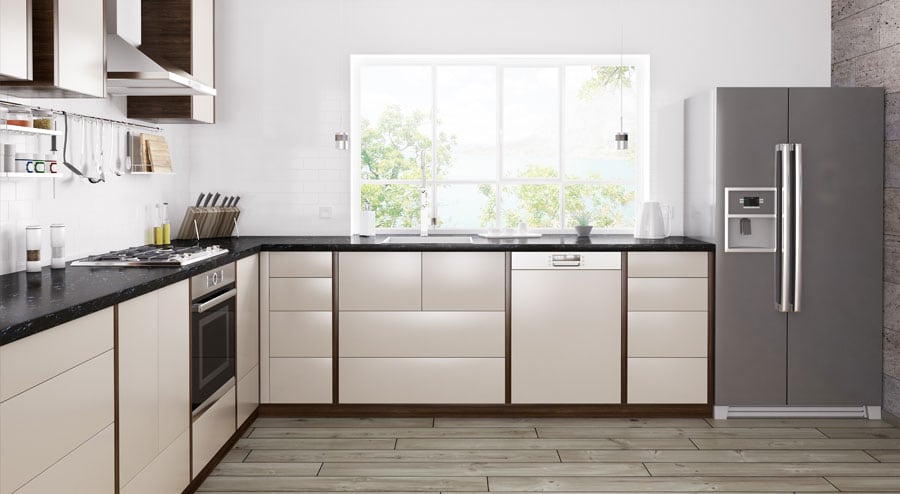
Choose a refrigerator with long door handles that allow a grip at a comfortable position. Also look for storage options on the door, such as a place for water jugs. Carefully consider lighting both inside and out: both the unit’s interior as well as illuminated features like ice and water dispensers.
Many of these shelves will also be see-through, which will provide a resident with additional perspective and leverage regardless of the angle at which refrigerator is approached.
Side-by-side refrigerator freezer units are usually the most accessible, because people can easily open both compartments. These units also have narrower doors, which reduces the probability of injury because of the lower swing radius. If you must choose a top mount refrigerator, make sure that the pullout sections/shelves are easy to access and that freezer storage is convenient.
Slide-out shelves are always better than traditional shelving. Many of these shelves will also be see-through, which will provide a resident with additional perspective and leverage regardless of the angle at which refrigerator is approached. The more visible items are on a refrigerator shelf, the less likely a spill will occur. If your refrigerator has a display, make sure that it is a large one.
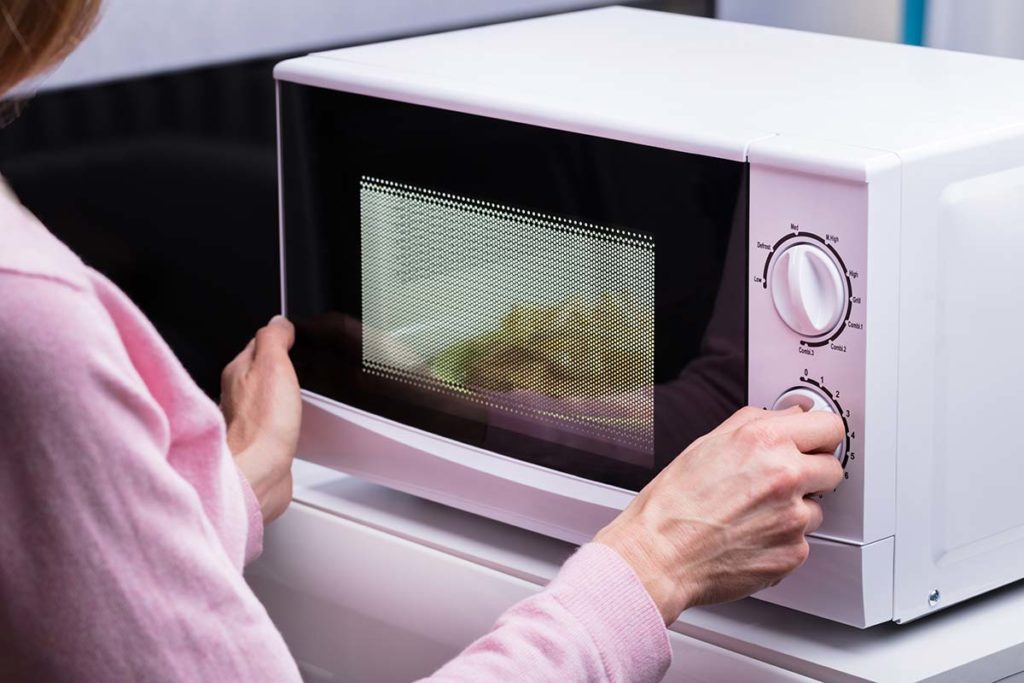
One of the best features of modern microwave ovens is the ability to install it at eye level. Shop thoughtfully for a new microwave. Some are easier to reach than others, and many are set up for elderly people who are hard of hearing or visually impaired. These models will indicate that the cooking is done with a loud beep or other visual indicators. They will also give directions to residents, such as when the food needs to be stirred or reheated. The best microwaves will also have simple controls with large, easily read labels or captions. These should have obvious visual indicators and tones for common instructions.
Some are easier to reach than others, and many are set up for elderly people who are hard of hearing or visually impaired. The best microwaves will also have simple controls with large, easily read labels or captions.
A dishwasher can reduce clutter and minimize the possibility of injury from a broken glass or plate. Make sure that the dishwasher is installed at an accessible height.
Modern toasters feature pop-up, automatic shut-off options so no one will have to reach inside a small oven to remove food. If you or your loved one still has that old school reach-in toaster, it is time to replace it.
As with all electrical appliances, make sure that any display is large and easy to read.
As with toasters, the majority of kitchen appliances with aging in place safety features will come with automatic shut-off options. This helps to prevent accidents by eliminating the possibility of an unattended appliance that is using electricity or heat.
Make sure that all of the appliances in your kitchen are sectioned off and well-marked.
Unattended cooking appliances are one of the top causes of injuries in the kitchen. In general, make sure that all of the appliances in your kitchen are sectioned off and well-marked so there can be no mistake when they are being used or in an idle position.
If the dishware and silverware are easily breakable, replace them with hard plastic. If you choose to keep your stainless steel silverware, at least make sure that the knives remain sharp. Contrary to popular belief, most kitchen injuries occur from dull knives.
An easily accessible medical alert device will allow an aging in place resident to quickly notify medical personnel if an accident should occur in the kitchen. These alert devices should be installed around the house, but be sure to prioritize the kitchen as a place for at least one of them.
Design your kitchen with safety in mind; a medical alert device, smoke & monoxide detectors, and an easy to use fire extinguisher are all must-haves.
Prioritize the kitchen as a room that should be in reach of a smoke and carbon monoxide detector. You should have multiple smoke and carbon monoxide detectors throughout the house.
There should be an up-to-date fire extinguisher at all times. Even if it is too heavy for someone at home to operate, keep one in the kitchen where everyone knows where it is and can direct someone else to it.

Telephones should be placed within arm’s reach of a standing or sitting resident. Although most modern telephones do not come with long cords that attach the base to the earpiece, do not invest in a phone that has extremely long cords that could be tripped over. It is always best to have a cordless, up-to-date phone to ensure the safety of the residents.
Telephones should be placed within arm’s reach of a standing or sitting resident. Avoid phones with long cords that could be tripped over.
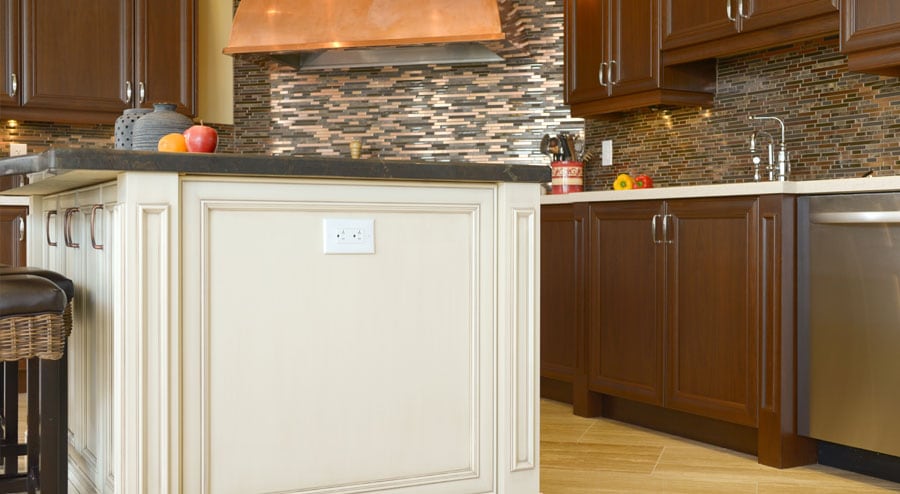
No single kitchen outlet should be overworked (more than two appliances plugged into any one station). Overworking an outlet increases the chances of an electrical accident. Make sure that the number of appliances in the kitchen does not exceed the capacity of the kitchen.
No appliance should be connected to an outlet that passes over the sink or any other source of water. If there is not enough room for an outlet, either reduce the number of appliances in the kitchen or reorganize the countertop to make room for the appliance to be near an outlet.
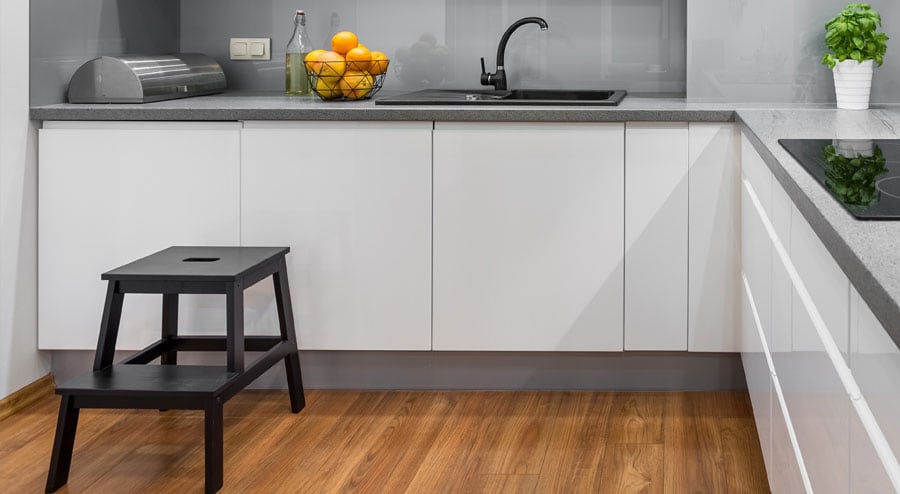
A stepstool will help your resident get to top level cabinets. If possible, install the steps as wall attachments that can be pulled out rather than separate stools that might be tripped over if forgotten.
Only 20% of people considering an aging in place remodeling prioritize the kitchen, which is an extremely low percentage when you consider how much time we spend in it.
Even without a physical mobility issue, jar openers and other special utensils help arthritic users provide additional functionality. Look for utensils with the label of “universal design” or “user-centered design.” These utensils are usually easier to use, safer and more convenient for aging in place residents.
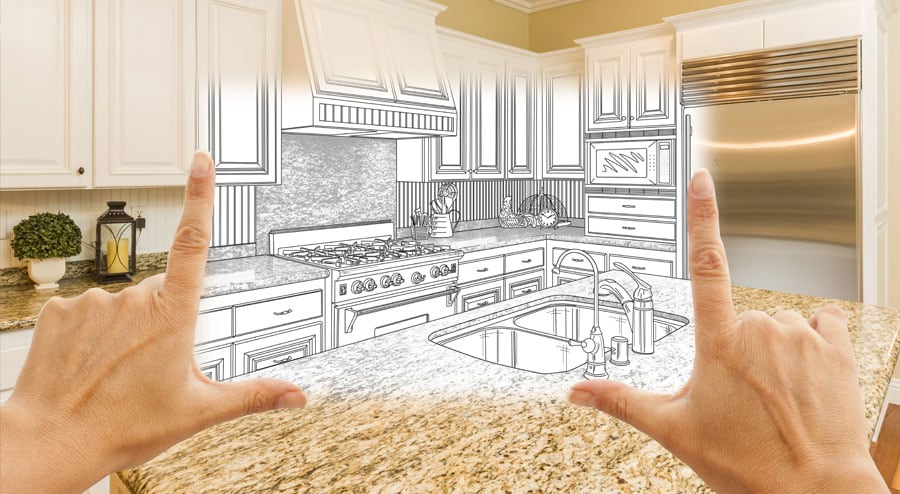
Only 20% of people considering an aging in place remodeling prioritize the kitchen, which is an extremely low percentage when you consider the utility that room generates. Furthermore, the kitchen is also a relatively dangerous room if it is left unmodified. This is one of the most important reasons not to remodel a kitchen for an aging in place resident in a haphazard or random fashion.
The purpose of an aging in place remodeling is not to apply one or two of the above suggestions. Simply adding grab bars to a kitchen will not substantially improve a resident’s safety of your resident, and may even reduce the dignity they have in their home. Aging in place remodeling should be done holistically, even if it has to be done piecemeal.
Improving a kitchen’s overall functionality for an aging in place residence will look similar to an upgrade if it is done correctly. The final takeaway: a more functional kitchen makes the space more useful for anyone, especially for a resident who may possibly have limited mobility, motor skills or other physical constraints. So when in doubt, go for utility. Apply suggestions in a way that makes sense in the room. Above all, consider the individual for whom all of the work is being done. Everyone requires something slightly different, and the best way to respect the aging in place resident is to customize your kitchen solutions to their specific needs.